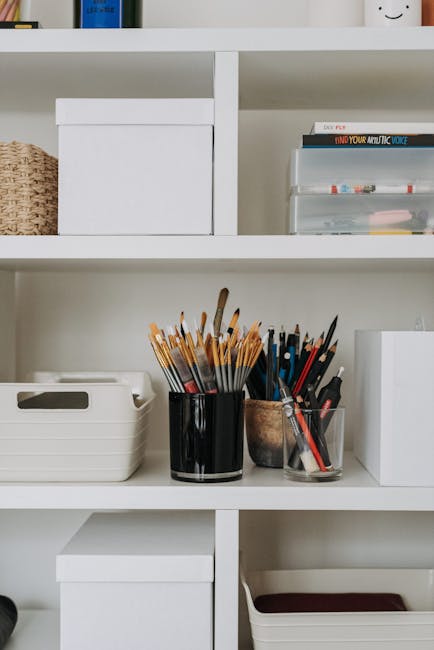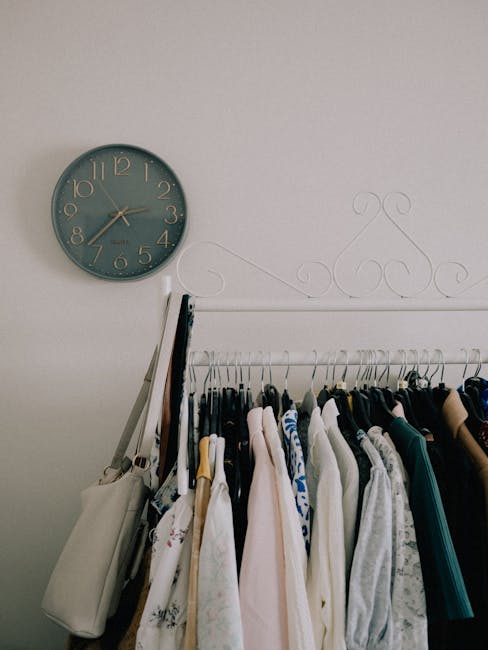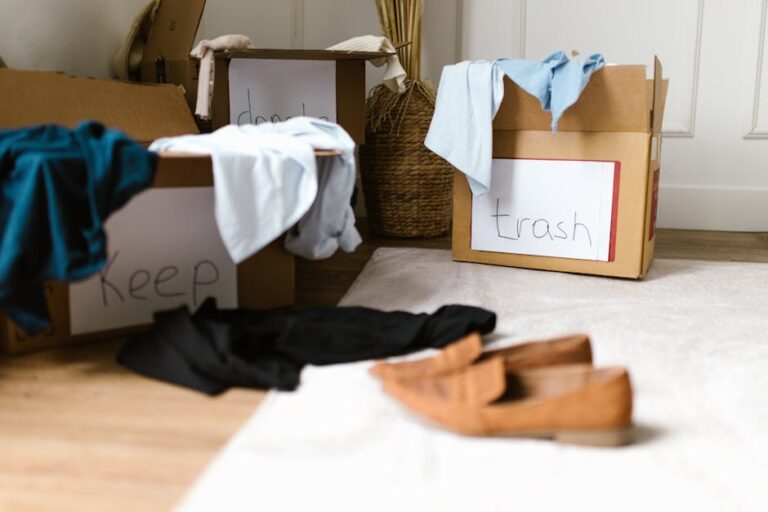
Wardrobe Wonders: Color and Style Organization
Unlocking the full potential of your wardrobe goes far beyond simply owning a lot of clothes. It’s about understanding your personal style, leveraging the power of color, and implementing an effective organizational system. This article will guide you through the process of transforming your closet from a chaotic mess into a curated collection that empowers your personal expression and streamlines your daily dressing routine.
Section 1: Understanding Your Personal Style & Identifying Your Wardrobe Needs
Before tackling the physical organization, you must define your personal style. This isn’t about blindly following trends, but rather about identifying the silhouettes, fabrics, and overall aesthetic that makes you feel confident and authentic.
- The Style Audit: Begin by thoroughly examining your existing wardrobe. Try on each item and ask yourself: “Does this truly reflect who I am? Does it fit me well and flatter my body shape? Do I love wearing it?” Be honest with yourself, and create three piles: “Love,” “Maybe,” and “Goodbye.”
- Defining Your Lifestyle: Consider your daily activities and lifestyle. Are you a student, a working professional, a stay-at-home parent, or a retiree? What types of events do you regularly attend? Your wardrobe should primarily cater to your most frequent needs.
- Inspiration is Key: Create a mood board or Pinterest board filled with images of outfits and individuals whose style you admire. Analyze these images to identify recurring themes – colors, silhouettes, patterns, and fabrics – that resonate with you.
- Defining Your Body Shape: Understanding your body shape is crucial for choosing clothes that fit well and flatter your figure. Common body shapes include pear, apple, hourglass, rectangle, and inverted triangle. Online resources and style guides can help you determine yours.
- Documenting Your Findings: Create a style profile based on your audit, lifestyle analysis, and inspiration gathering. This profile should include: dominant colors, favorite silhouettes, preferred fabrics, and key wardrobe pieces.
Section 2: The Power of Color: Building a Harmonious Palette
Color plays a vital role in creating a cohesive and versatile wardrobe. Understanding color theory and identifying your personal color palette can drastically improve your outfit combinations and overall style.
- Understanding Color Theory: Familiarize yourself with basic color principles, such as complementary colors (opposite each other on the color wheel, creating high contrast), analogous colors (adjacent to each other, creating harmonious and subtle blends), and monochromatic color schemes (using different shades and tints of a single color).
- Determining Your Seasonal Color Palette: Consider consulting a color analysis professional or using online resources to determine your seasonal color palette (Spring, Summer, Autumn, Winter). Each season is associated with specific colors that complement your skin tone, hair color, and eye color.
- Building a Core Color Palette: Choose 2-3 neutral colors that will serve as the foundation of your wardrobe. These colors should be versatile and easy to pair with other colors. Common neutral options include black, navy, gray, beige, white, and olive green.
- Introducing Accent Colors: Select 2-3 accent colors that reflect your personal style and complement your core color palette. These colors can be used in smaller doses, such as in scarves, jewelry, or statement pieces.
- Color Coordination Strategies: Practice color coordination techniques to create visually appealing outfits. Try using the “60-30-10” rule, where 60% of your outfit is your dominant color, 30% is your secondary color, and 10% is your accent color.
Section 3: The Art of Wardrobe Organization: Creating a Functional Space
Transforming your closet into a functional and aesthetically pleasing space requires careful planning and strategic organization.
- The Decluttering Process: Begin by completely emptying your closet. This allows you to assess the space and clean it thoroughly. Refer back to your “Goodbye” pile from the style audit and donate or sell any unwanted items.
- Categorizing Your Clothes: Group your clothes by type (e.g., tops, bottoms, dresses, outerwear) and then further categorize them by style (e.g., casual, workwear, evening wear).
- Choosing the Right Hangers: Invest in high-quality hangers that are appropriate for different types of clothing. Opt for slim velvet hangers to maximize space and prevent clothes from slipping. Use wooden hangers for heavier items like coats and jackets.
- Hanging vs. Folding: Decide which items should be hung and which should be folded. Hang items that are prone to wrinkling, such as blouses, dresses, and skirts. Fold items that are less likely to wrinkle, such as sweaters, t-shirts, and jeans.
- Optimizing Shelf Space: Utilize shelf dividers to keep folded items neatly stacked and prevent them from toppling over. Use baskets or bins to store accessories, such as scarves, hats, and gloves.
- Utilizing Vertical Space: Install additional shelving or hanging rods to maximize vertical space in your closet. Consider using over-the-door organizers or shoe racks to further optimize space.
- Implementing a Rotation System: Rotate your wardrobe seasonally to keep only the clothes you are currently wearing in your closet. Store out-of-season items in storage bins or garment bags.
- Labeling and Accessibility: Label shelves and bins to easily identify the contents. Ensure that frequently used items are readily accessible.
- Maintaining Order: Make it a habit to put clothes away immediately after wearing them. This will prevent clutter from accumulating and keep your closet organized.
Section 4: Accessorizing Strategically: Adding the Finishing Touches
Accessories can transform an outfit and express your personal style. Organizing your accessories effectively will ensure that you can easily find what you need to complete your look.
- Accessory Audit: Similar to the clothing audit, evaluate your accessories. Discard or donate any items that you no longer wear or that are damaged.
- Jewelry Organization: Invest in a jewelry organizer with compartments for necklaces, earrings, rings, and bracelets. Hang necklaces to prevent them from tangling.
- Scarf and Belt Storage: Use scarf hangers or rolling racks to store scarves. Hang belts on hooks or store them in a drawer organizer.
- Shoe Organization: Store shoes on shoe racks, in clear shoe boxes, or on shelves. Consider organizing shoes by style or color.
- Handbag Storage: Store handbags in dust bags to protect them from dust and scratches. Use shelf dividers to keep handbags upright and prevent them from losing their shape.
Section 5: Maintaining Your Organized Wardrobe: Establishing Sustainable Habits
The key to a consistently organized wardrobe is establishing sustainable habits and regularly maintaining your system.
- The One-In, One-Out Rule: For every new item you purchase, consider donating or selling an existing item. This will prevent your wardrobe from becoming overcrowded.
- Regular Purges: Schedule regular wardrobe purges (e.g., every season or every year) to declutter and reassess your style.
- Laundry Routine: Establish a consistent laundry routine to prevent clothes from piling up.
- Quick Tidy-Ups: Spend a few minutes each day tidying up your closet. This will prevent small messes from becoming overwhelming.
- Re-evaluate Your Needs: Periodically re-evaluate your lifestyle and wardrobe needs. As your life changes, your style may also evolve. Adjust your wardrobe accordingly.
By following these steps, you can transform your wardrobe into a curated collection that reflects your personal style, streamlines your daily dressing routine, and empowers you to feel confident and stylish every day.

